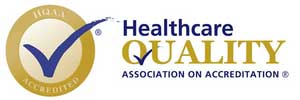"How to Prescribe a Power Wheelchair or Scooter"
For Medicare and other insurance companies to cover a power wheelchair or scooter it must serve a medical purpose and be prescribed by a physician. A power wheelchair helps individuals with mobility impairment regain an active lifestyle in the comfort of their homes and gives them the ability to perform activities of daily living such as feeding, grooming, toileting, home management etc. To meet Medicare's criteria the following must be followed.
Documentation
To successful prescribe a power wheelchair, Medicare criteria require that a face-to-face mobility evaluation be conducted before writing a prescription. During the face-to-face evaluation the physician will document the patient's mobility limitations to substantiate the need for a power mobility device.
Documentation in Chart Notes
The results of the face-to-face evaluation must be documented in the physician's progress notes for the day he/she saw the patient. These results cannot be documented on any forms; however, we will send you forms that list the questions that must be answered in the progress notes or you can print this page to use when prescribing a power chair or scooter.
***Also the physician must document in the chart note the main reason for visit to be "MOBILITY EVALUATION".***
Questions to answer during face-to-face visit
***During the face-to-face evaluation the following questions must be answered:***
1. Reason for office visit: Must be Mobility evaluation
2. Does the beneficiary have a mobility limitation that impairs his/her ability to participate in one or more MRADLs (Mobility-Related Activities of Daily Living) in the home such as toileting, feeding, dressing, grooming, and bathing in customary locations in the home. A mobility limitation is one that:
Prevents the patient from accomplishing an MRADL entirely, or
Places the patient at reasonably determined heightened risk of morbidity or mortality secondary to the attempts to perform an MRADL; or
Prevents the patient from completing an MRADL within a reasonable time frame.
Example Documentation:
The patient has history of Parkinson's disease for the past 2 years resulting in poor balance, weakness and she also has history of diabetes x 25 years limiting her ability to participate in activities of daily living
3. Can the patients mobility limitation be resolved with an appropriately fitted cane?
Example Documentation:
due to (state reasons: could be medical conditions or simply wheelchair bound) the patient is unable to use an appropriately fitted cane
4. Does the patient have sufficient upper extremity function to self-propel an optimally-configured manual wheelchair in the home to perform MRADLs during a typical day. Examples of limitations are Limitations of strength, endurance, range of motion, or coordination, presence of pain, or deformity or absence of one or both upper extremities are relevant to the assessment of upper extremity function.
Example Documentation:
Patient cannot use a manual wheelchair because of poor range of motion or insufficient strength and coordination to push a manual wheelchair. OR there is presence of pain in upper extremities. This must be very well documented with sound clinical information.
5. Does the patient have the ability to use a scooter? For a scooter to be covered the patient must be able to
Safely transfer to and from a scooter, and
Operate the tiller steering system, and
Maintain postural stability and position while operating the POV in the home.
If this criteria is not met a power wheelchair will be the appropriate option. To use a scooter, a patient must have the postural stability, balance, strength and the ability to sit up right
Example Documentation:
The patient has insufficient trunk, balance to sit up right or upper body strength to use a scooter. OR has insufficient space in home to maneuver a scooter.
6. Does the patient have the mental capabilities (e.g., cognition, judgment) and physical capabilities (e.g., vision) to use a power mobility device in the home?
Example Documentation:
Yes the patient has the physical and mental capabilities to operate a power wheelchair. Or the patient has all cognitive, mental, judgement and sensation necessary to use the power wheelchair
7. Does the patient have the willingness to use the power mobility device prescribed?
Example Documentation:
The patient is willing and able to use the power wheelchair to accomplish her daily activities
Next Step after Conducting the Face-to-Face Exam:
Once the face to face examination is completed, the physician must write a prescription with the following information:
The prescription must contain the following elements
1. Beneficiary Name
2. Item prescribed
3. Length of Need
4. Diagnoses codes
5. Face to face evaluation date
6. Physician signature
7. Date of signature
Once this information is completed the physician can fax the paperwork to Lenox Medical at 202-387-1963 or toll-free fax 1-866-702-3090.
The details below may also be added in patients chart notes but may include other information. Each element does not have to addressed in the face to face evaluation:
Symptoms, Related Diagnosis, History, How long condition has been present, Weight, Physical exam, Past use of cane, walker, or any mobility assistive device, Neck, trunk, and pelvic posture and flexibility.

 Bill Payment
Bill Payment
